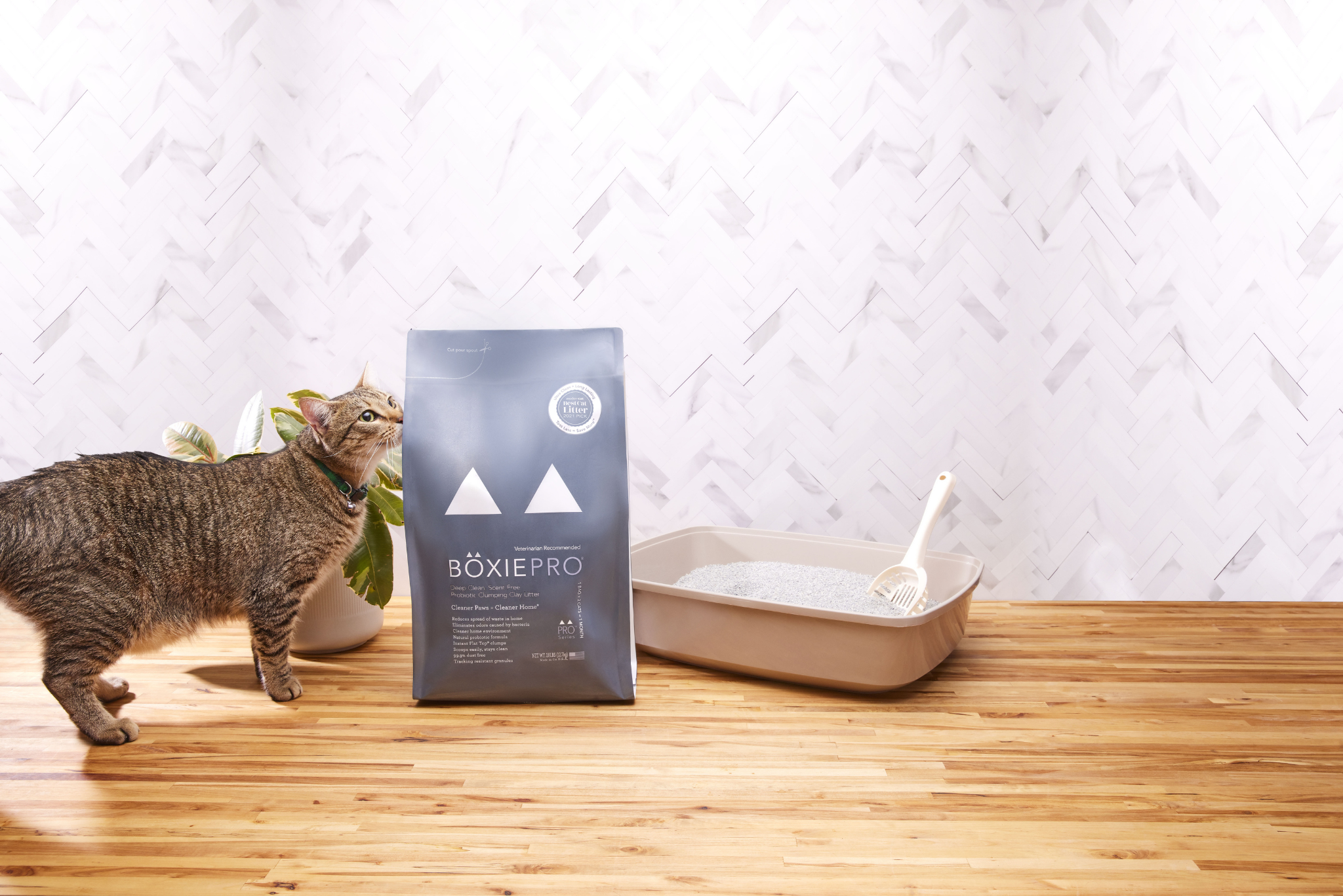Which Type of Cat Litter Is Best for Indoor Cats

Which Type of Cat Litter Is Best for Indoor Cats?
When your cat never sets paw outside, their litter box becomes their entire bathroom — and your indoor air depends on it.
The best cat litter for indoor cats isn’t just about odor control.
It’s about health, cleanliness, and making sure your cat actually uses the box.
We’re breaking it all down for you to make it easy.
Key Takeaways
-
Indoor cats need low-dust, unscented litter for better air and respiratory health
-
Clumping litter makes cleanup easier and reduces lingering smells
-
Litter box placement matters — don’t just shove it anywhere
-
Some ingredients can irritate cats or even cause them to avoid the box
-
Choose fine, soft granules to avoid tracking and keep paws happy
What Is the #1 Recommended Cat Litter for Indoor Use?
Let’s be honest: no litter is perfect.
But the best cat litter for indoor cats has 3 must-haves:
clumping power, low dust, and no added scent.
So, is scented litter bad for cats? Vets consistently recommend unscented clumping litter because cats have extremely sensitive noses. Heavily perfumed litter can actually discourage litter box use. (A light scent is fine, if you really want one, no issues with that)
Clumping is crucial.
It makes scooping easier, seals in odor, and keeps the box fresh longer.
Dust-free is non-negotiable.
Indoor cats are exposed to that dust 24/7 — and so are you.
If you want a litter that meets all three?
Boxiecat Unscented Clumping Clay Litter checks every box.
(And no, we’re not naming competitors. We’re just better.)
Is It Okay to Keep a Litter Box in the Bedroom?
Short answer?
Yes — but only if you maintain it religiously.
In small homes or studios, sometimes the bedroom is the only option.
But be aware:
-
Scooping is a must — every day
-
Odors build fast in closed spaces
Dust can settle on bedding and surfaces
Tip: Place an air purifier nearby, and use a covered litter box with a carbon filter if your cat tolerates it.
Where Should I Place My Cat’s Litter Box Indoors?
Cats love quiet, private, and low-traffic areas.
And yet, many people stick litter boxes in the laundry room or next to a noisy furnace.
Don’t do that.
Here’s where to put it:
Top 5 Indoor Litter Box Locations:
-
Bathroom corner with good airflow
-
Bedroom nook (last resort)
-
Hallway closet with door propped open
-
Spare room or office
-
Under a table or behind a screen for privacy
Don’t place it:
-
Next to food or water bowls
-
In direct sunlight
-
Near loud appliances
-
In sealed cabinets
Here's a bit more about where to put your cat's litter box
What Makes Litter Safe and Healthy for Indoor Cats?
Cats inhale everything near their box — so you want the cleanest, simplest formula possible.
Look for:
-
No added fragrance
-
No silica dust or synthetic deodorizers
-
Natural or high-quality clay materials
-
Tight clumping that locks in ammonia
If your cat is long-haired, go with fine granules that don’t stick to fur.
If they have allergies, go unscented always.
And remember — just because a litter smells like flowers doesn’t mean it’s clean.
Top 5 Features of a Great Indoor Cat Litter
-
Low dust: Cleaner air for you and your cat
-
Fragrance-free: No artificial scent bombs
-
Strong clumping: Easier scooping, less odor
-
Soft texture: Gentle on paws, less tracking
-
Non-toxic ingredients: Especially for curious kittens
What Cat Litter Should You Not Use for Indoor Cats?
Avoid these like cat hair in your coffee:
Heavily scented litter
Litter with visible dust clouds
Large-grain or sharp crystal litter
Non-clumping options unless advised by a vet
Litters with color dyes or chemical beads
If your cat sniffs and walks away, the litter is wrong.
Should I Move the Litter Box to Where My Cat Is Peeing?
If your cat has started peeing outside the box — listen to them.
They’re telling you something’s wrong.
Yes, you can try moving the box to their new spot.
It could be more comfortable, quieter, or feel safer.
👉 Gradually shift the box back to your desired location once they’re using it again.
And clean the old spot with an enzyme cleaner to eliminate the smell completely.
How Often Should I Change My Indoor Cat’s Litter?
Scoop daily — no excuses
Full change every 7 days
Wash the box every 2–4 weeks with hot water only — no bleach or citrus
Litter Change Schedule by Type
|
Litter Type |
Scoop Daily? |
Full Change |
Notes |
|
Clumping Clay |
✅ |
1x/week |
Most common indoor litter |
|
Natural (wood, corn) |
✅ |
5–7 days |
Varies by brand |
|
Silica Crystals |
✅ |
Every 2-3 weeks |
Absorbs urine, no clumps |
|
Paper Pellets |
✅ |
2x/week |
Low dust, soft texture |
FAQ
What is the healthiest litter for indoor cats?
One that’s unscented, dust-free, and non-toxic.
Look for tight clumping and soft texture.
How deep should litter be?
2-3 inches is ideal.
Not enough = cat won’t dig. Too much = waste gets buried too deep.
Can I use flushable litter indoors?
Technically yes, but it may clog your plumbing.
Always check local regulations and your pipe setup.
Why did my cat suddenly stop using the litter box?
Could be location, litter type, or a medical issue.
Always check with your vet if behavior suddenly changes.
Are air purifiers good near litter boxes?
Yes — they help control dust and smell, especially in small homes.
(Comparison Table)Indoor Cat Litter Types
|
Litter Type |
Clumps? |
Dust Level |
Scented? |
Tracks Easily? |
Best For... |
|
Clumping Clay |
✅ |
Low |
❌ |
Medium |
All-around daily use |
|
Natural (Plant-based) |
✅/❌ |
Low |
❌ |
Low |
Allergy-sensitive cats |
|
Silica Crystals |
❌ |
Very Low |
✅/❌ |
Low |
Odor control with less scooping |
|
Paper Pellets |
❌ |
Very Low |
❌ |
Low |
Kittens or post-surgery cats |
Final Tips for Indoor Cat Owners
-
Keep the litter box away from loud or busy areas
-
Clean consistently — cats will find new spots if it’s dirty
-
Choose fine-grain, unscented litter for better air and comfort
-
Use a litter mat to catch granules
-
Keep a small lidded trash bin nearby for daily scooping
The Bottom Line
Indoor cats depend on you to keep their litter box clean, safe, and scent-free.
The right litter doesn’t just help your cat — it helps your whole home stay fresh.
Clumping. Unscented. Dust-free.
That’s the indoor cat trifecta.
- Tags: Litter 101

